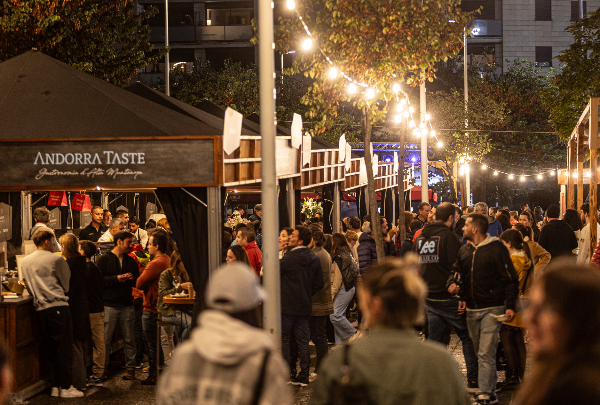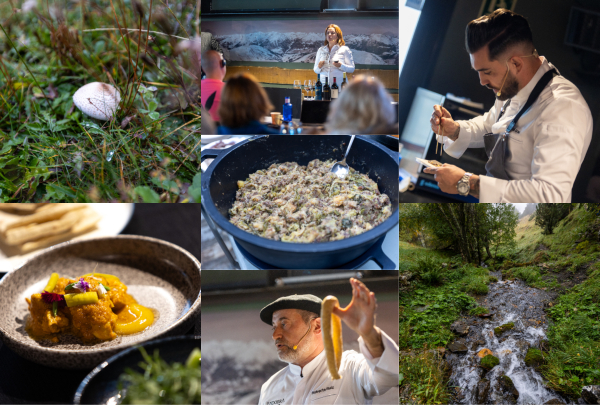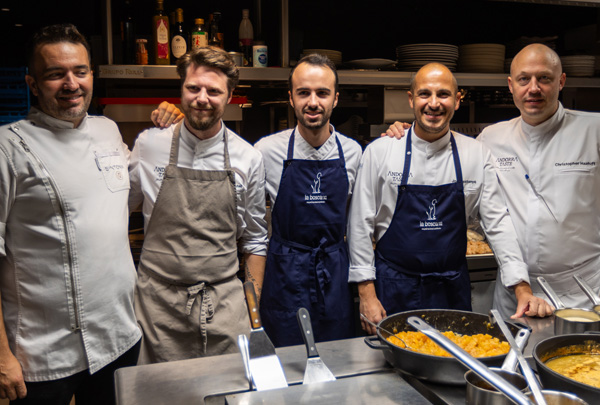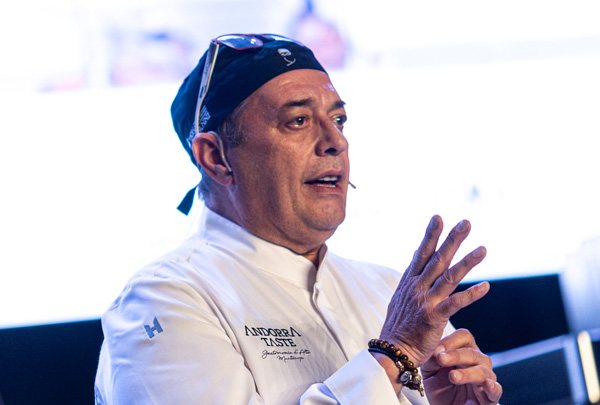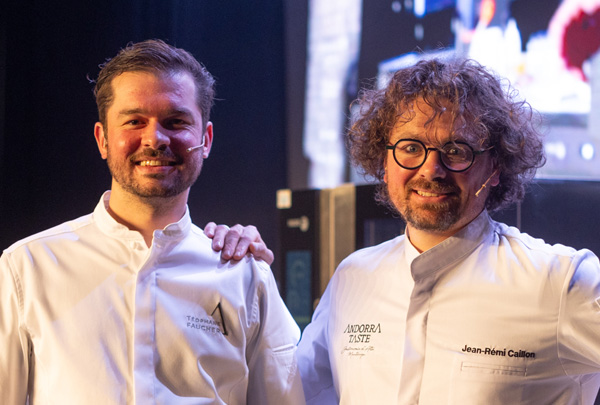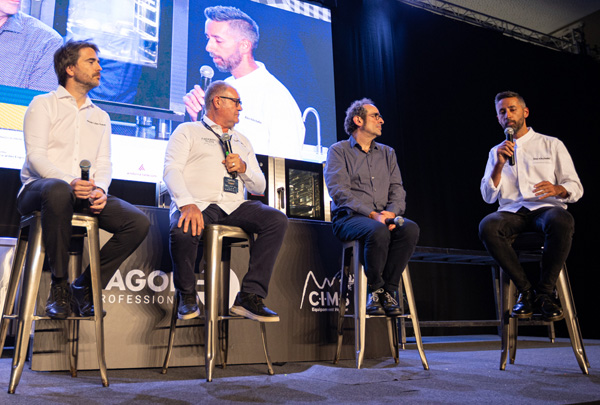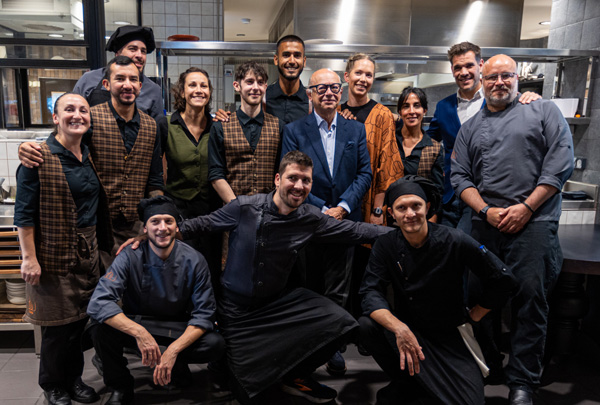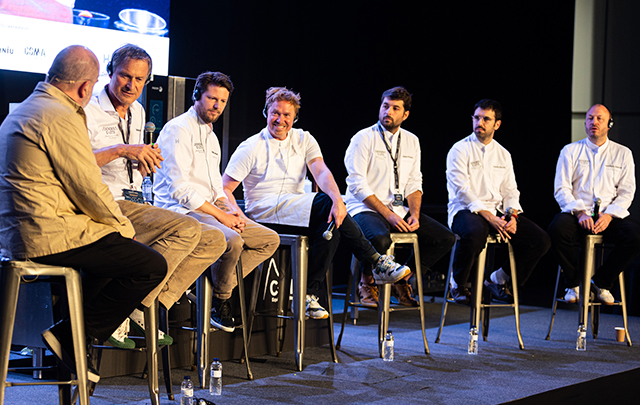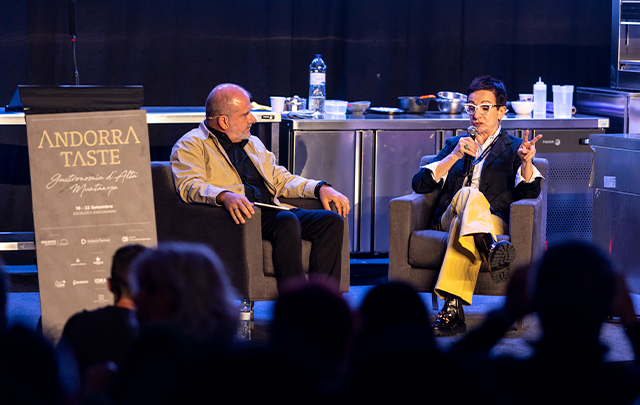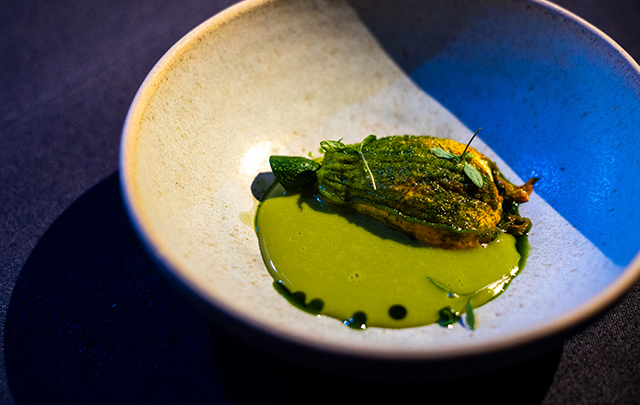News
Nordic chefs claim their place at Andorra Taste as an example for adapting any cuisine to terroir
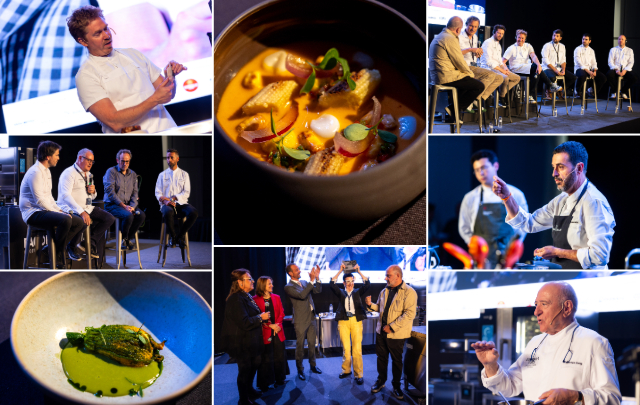
The second day of Andorra Taste brought together the spirit of this third edition in two round tables: Nordic countries and mountain cuisine. The first debate recalled the beginnings of the Nordic cuisine movement and the new steps it has taken, while the second analysed the uniqueness of the cuisine de borda, typical of the Andorran mountains. But the day also allowed for new perspectives, such as those offered by chefs Jean Rémi Caillon, Ricard Camarena, Carles Gaig and Raül Balam.
The lessons of the new Nordic cuisine
The Nordic countries are the guests of this year's Andorra Taste because they are proof that, despite the climatic and geographical conditions, they have managed to create a cuisine that has been and continues to be a benchmark on the international gastronomic scene in recent years. This culinary revolution and the new generation that is now leading it were the subject of a round table moderated by Benjamín Lana, director of Vocento Gastronomía, and attended by the Nordic chefs participating in the congress and the businessman and chef Claus Meyer, one of the fathers of Nordic cuisine. Meyer, co-founder of the iconic Noma restaurant in Copenhagen and one of the architects of the new Nordic cuisine, was the promoter of the Nordic Cuisine Manifesto, an agreement with 20 other chefs in which they pledged to create a rich gastronomic culture and democratise the luxury of good food. He explained that he wanted to "adapt the concept of terroir, which exists in Spain and France, to our culture. And at the same time to invent our own way of representing culture on the plate, so that what the chefs serve in the restaurant can be taken home, because in Scandinavian homes the cuisine still needs a lot of improvement'. Recalling those early days, he confessed: I didn't know that it could become what it has become, that we could achieve so quickly what took 20 years in Spain.
The new Nordic chefs have taken inspiration from all this, as Filip Gemzell (ÄNG**, Tvååker, Sweden) admitted - "in Sweden we have learnt from Denmark, which did it before us, and we have adapted it to our style" - but they are also facing new challenges, as Søren Selin (AOC**, Copenhagen) explained when he explained that "25 years ago, nobody from abroad came to eat in Denmark. Now we are an attraction for gourmet tourists. But this has put us in a bit of a vulnerable position, because we can no longer survive on local diners alone, we always need tourists to come. In January, for example, when tourism is low, there are too many of us to share the cake.
One possible solution is the unique approach of Christopher Haatuft (Lysverket*, Bergen). The Norwegian has created his own gastronomic concept, neofiordic, which 'refers to the fact that in Western Norway we have a different way of cooking than in the rest of the country, because we have a very inhospitable area, rich in fish and seafood but very poor in vegetables'. The managers of the Finnish Nolla (Albert Franch, Carlos Henriques and Luka Balac) found their difference in the fight against waste. Before this debate, Selin (AOC**, Copenhagen) also explained his culinary proposal at Andorra Taste. A master of the senses, Selin is committed to the use of local fauna and flora, maximum respect for the product and, above all, a very personal way of presenting his proposals, allowing the diner to interact with each dish in one way or another. I like to serve in a different and original way in the dining room, because I think it gives more value to the raw material. We chefs spend many hours with the tongs trying to make the dish visually perfect, but when you prepare it at the table, as well as spectacularly, the diner concentrates more on the product and the flavour,' he argued in his presentation, while putting this into practice by preparing three aesthetic dishes.
The international presence on the second day of Andorra Taste also had an Alpine flavour in the form of the French chef Jean-Rémi Caillon (Alpage*, Courchevel). His very personal culinary approach combines plants and local products: vegetables and herbs take precedence over animal products, which share the limelight with Savoyard ingredients and recipes (crozets, polenta, chartreuse).
Mountain meets sea
Ricard Camarena (Ricard Camarena Restaurant**, Dénia) came to Andorra from Valencia to share his vision of the product and its treatment with the chefs of the high mountains. In the mountains, the uniqueness comes largely from the products, so the experience of a chef like Camarena, who is so dedicated to the product, made sense in Andorra Taste. My cooking is intuitive; I don't give up on changing my mind when the product demands it. For me, the idea of perfection is not to repeat the same thing over and over again, but to adapt my approach to the life of the product and to be ready to change at any time,' he explains. A flexibility that he advised others to adopt.
On the second day of Andorra Taste, two chefs representing two generations of Barcelona cuisine took to the stage. Carles Gaig (Gaig restaurant) and Raül Balam (Moments**). Both were aware that their city is only 300 metres above sea level, but both insisted on their right to seek inspiration for their city's cuisine from the heights.
At Andorra Taste, Gaig presented a game dish with wood pigeon - "which my own son-in-law hunted" - a bird that is "not very common in Catalan cuisine, but which is excellent when cooked with care". For his part, Balam arrived in Andorra full of excitement because "this year we are celebrating the 15th anniversary of Moments". To celebrate, he brought to Andorra the dishes from his anniversary menu "that were the best". He demonstrated this, for example, with a foal from the Pyrenees (from his menu dedicated to the Seventh Art).
Carme Ruscalleda, Andorra Taste Prize
In this third edition of Andorra Taste, the award for the professional days of the event went to Carme Ruscalleda, one of the most recognised and popular chefs in the gastronomic world. Ruscalleda took the prize from Michel Bras and Gastón Acurio, the first and second runners-up respectively.
Before the award ceremony, Ruscalleda had the opportunity to reflect on her legacy in an interview with Benjamín Lana, general manager of Vocento Gastronomía, who asked her how she was coping with retirement. A retirement that has not really been such, as Carme herself said. First of all, I have no regrets about my choices. I've been told that when you close Sant Pau you go into a depression. The truth is that I don't feel it at the moment because I still have a connection and a commitment to the kitchen. I've freed myself from the services, that's for sure,' said the chef.
The Catalan ended her speech with a piece of advice for Andorran chefs: "The cuisine of a place is culture, character and uniqueness. Immerse yourself in this uniqueness and make it your own. Gastronomy is the friendly postcard of a country', said the winner with conviction.
The Borda kitchen
One of the most typical buildings in the Andorran mountains, if not the most typical, are the "bordas", old farm buildings that have been converted into restaurants. The borda is perceived by tourists as 'something authentic to Andorra', explained gastronomic journalist Salvador García-Arbós during the round table that opened the afternoon session of the second day of Andorra Taste. A positive prejudice that must be nurtured and exploited", added the journalist, who shared a table with another colleague from the Andorran press, Josep Lluís Trabal, and two chefs in bordas: the young Alex Kinchella (La Cort del Popaire) and Josep Maria Troguet, who has been running the Borda Raubert for more than 50 years.
Trabal agreed, adding that "there is still a long way to go in the configuration of Andorra's gastronomic identity and it is obvious that the borda, as a sign of identity that it is, must play an important role in this process". Kinchella and Troguet, as chefs, highlighted the main challenge of this role: to find a balance between the traditional cuisine that people expect to find in a borda, without losing sight of the fact that gastronomy must evolve.
However, since Andorran cuisine is not limited to the bordas, the day also saw the participation of a chef who is present in the Principality and who is opening a new restaurant this year: Andrea Tumbarello. The Italian, who lives in Spain, brought his Andorran vision of his favourite product, the truffle.


